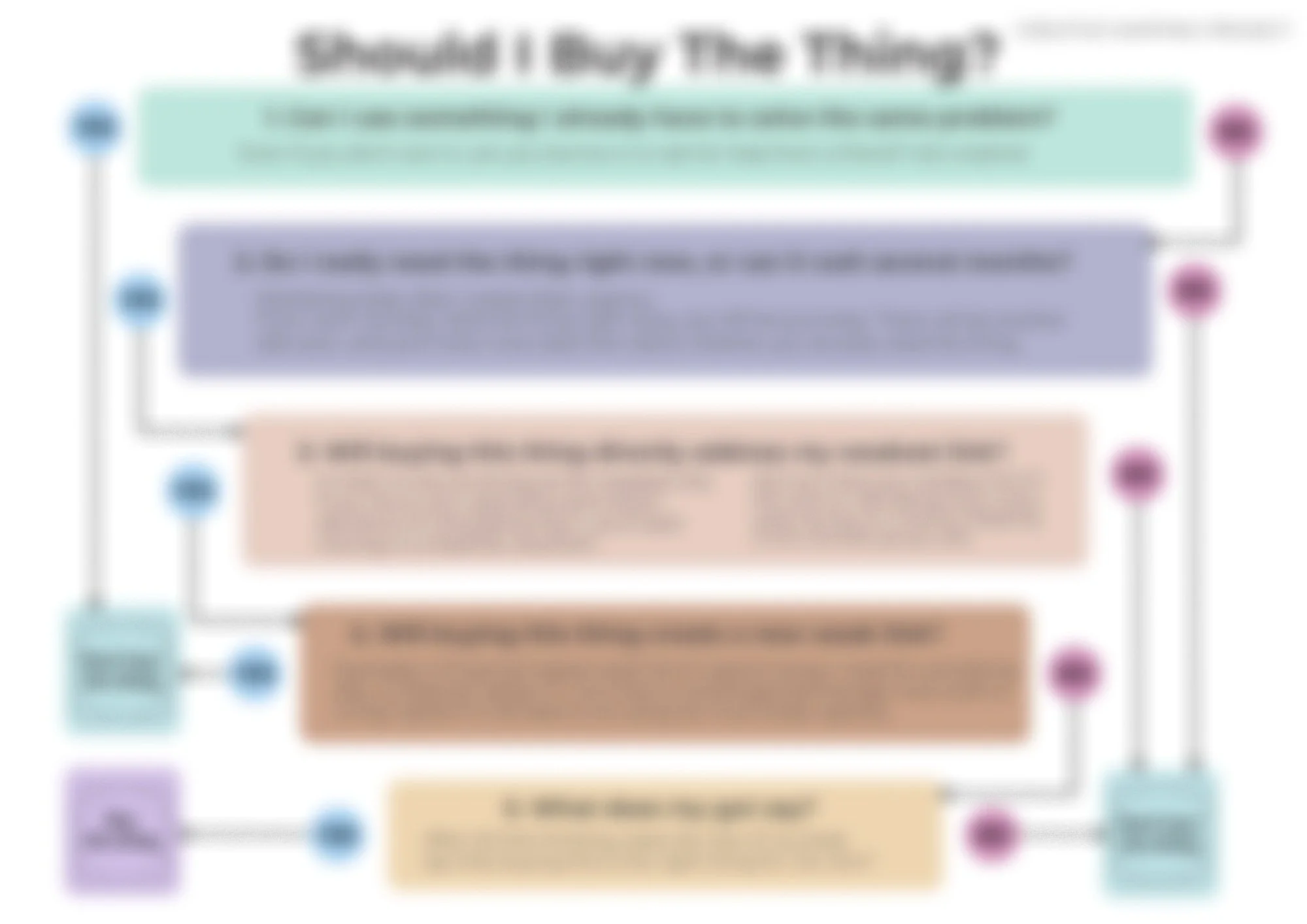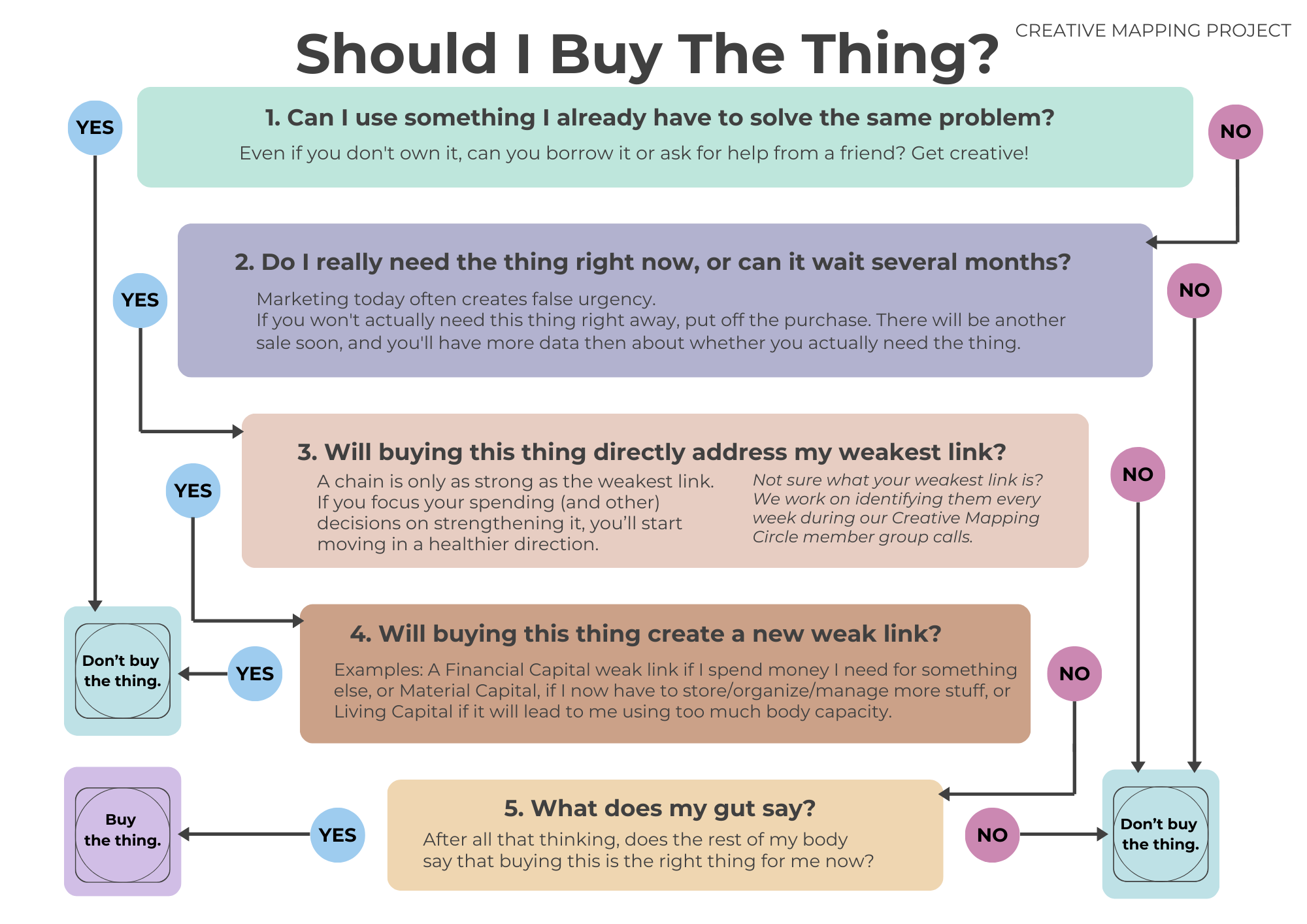Every year, so called Bl*ck F#&day and Cyb&r W**k freak me out a little more.
On the one hand I just want to say "Happy Buy Nothing Day" and crawl under a rock to hide from predatory capitalism (which is essentially what I did this year).
But as someone who does buy cool instruments/gear, uses books/software/courses for my projects, and occasionally has to dress himself in clothing etc, it feels like a missed opportunity to not buy things at lower prices.
How I Decide What (Not) To Buy
Instead of judging myself/freaking out when I want to buy something, I go through this simple decision-making process, (and yes, I nerded out for hours turning it into a chart).
So much of sustainable Career Design is about knowing when to say ‘yes’ and when to say ‘no’.
Let me know if it works for you!
(Also curious if it’s missing anything, let me know in the comments).
Text Version of the Decision Map
For those of you who prefer a text-based decision making process, here’s a transcription of the chart:
Ask "can I use something I already have to solve the same problem?"
Even if you don't own it, can you borrow it or ask for help from a friend?
Get creative!➤ If 'yes', don't buy the thing ➤ If 'no', go on to question 2.
Ask "Do I really need the thing right now, or can it wait several months?"
Marketing today often creates false urgency.If you won't actually need this thing right away, put off the purchase. There will be another sale soon, and you'll have more data then about whether you actually need the thing.
➤ If 'yes', don't buy the thing. ➤ If 'no', go on to question 3.
Ask "will buying this thing directly address my weakest link?"
A chain is only as strong as the weakest link. If you focus your spending (and other) decisions on strengthening it, you’ll start moving in a healthier direction.➤ If 'no', don't buy the thing. ➤ If 'yes', go to question 4.
Not sure what your weakest link is? We work on identifying them every week during our Creative Mapping Circle member group calls. Often thinking through the 8 Forms of Capital helps me identify my weakest link.Ask "will buying this thing create a new weak link?"
Some examples of a new weak link could include:A Financial Capital weak link if I spend money I need for something else, or Material Capital, if I now have to store/organize/manage more stuff,
➤ If 'yes', don't buy the thing. ➤ If 'no', go to question 5.
What does my gut say?
After all that thinking, take a breath, consider closing your eyes or looking away from the screen for a bit. Ask, “does the rest of my body say that buying this is the right thing for me right now?”
➤ If it feels right in your gut, buy the thing. ➤ If not, don’t buy it for now.
Good work being intentional about your decisions! This process gets easier with practice.

